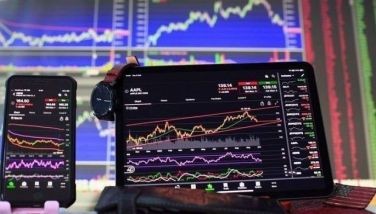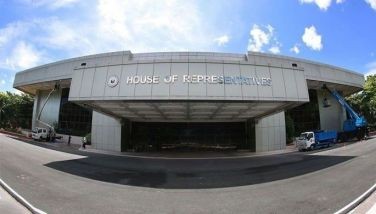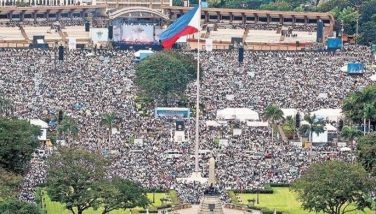Strong peso continues

The Philippines’ healthy fiscal position and the prudent measures by our country’s economic managers kept the Philippine peso strong throughout this pandemic. According to Finance Secretary Carlos Dominguez III, the Philippine economy hit its lowest in April and May and is now beginning recovery. “We do not have problems in liquidity. The economy is not short in money. The inflation is relatively low. Our peso is the strongest currency in Asia. People have faith in us. We are in good shape to overcome this crisis,” he added. Last Friday, the Philippine peso closed at 49.15 against the US dollar, its strongest level in three and a half years.
Strong Phl fundamentals
As early as Feb, we observed that the peso diverged from the movements of most emerging market (EM) currencies. While the US dollar became a safe-haven, the Philippine peso was surprisingly robust (see Contrasting currency moves caused by COVID-19, Feb. 17). We cited Fitch’s upgrade on its outlook on the Philippines (from stable to positive), attractive yield differential, and the fall in oil prices as reasons for the peso’s strength.
Defying the global credit downgrades
Despite the coronavirus pandemic, quarantine controls, and lockdowns, our country’s economic managers are making the right moves. Fitch’s affirmed the country’s BBB rating, citing the country’s fiscal and external buffers, low government debt-to-GDP ratio, net external credit position, and strong medium-term growth prospects. Moody’s and S&P Global also upheld the country’s credit rating and “stable” outlook, citing the country’s economic and fiscal management and robust banking system. Meanwhile, Japan Credit Rating Agency (JCRA) upgraded its ratings on the Philippines from BBB+ to A-, defying the global credit downgrades.
Fiscal, external positions cushion the COVID-19 fallout
Policymakers have ample fiscal space to respond to the deepening coronavirus crisis while keeping the debt level manageable. Gross international reserves (GIR) are at record highs of $93.3 billion as of June. All these have been supportive of the peso.
Weak dollar amplifies peso strength
By June, other forces came into play. The general weakness of the US dollar amplified the peso’s strength (see The end of the strong US dollar?, June 8). The Philippine peso appreciates whenever the US dollar depreciates against other currencies.
As shown below, major currencies like the Swiss franc, the euro, the Japanese yen, and the Australian dollar have reversed early losses against the US dollar and are now showing gains year-to-date. The euro and the Aussie dollar hit new 52-week highs last week, while the Swiss franc registered a five-year high. Year-to-date, the peso remains the best performing currency in Asia with a 2.97 percent gain.
US Dollar index breaks below critical support

Last week, the US dollar index (DXY) confirmed the reversal of its 12-year uptrend and signaled the start of a multi-year decline. The DXY closed at 93.46, below the crucial trend line support at 94. The 40-week moving average has started to slope downwards, which increases the conviction in the breakdown.
Last Friday, Fitch Ratings revised its outlook on the US’ credit rating to negative from stable, citing a deterioration in the US public finances and the absence of a credible fiscal consolidation plan. “High fiscal deficits and debt were already on a rising medium-term path even before the onset of the huge economic shock precipitated by the virus. They have started to erode the traditional credit strengths of the US,” Fitch said. US’ credit rating remains at AAA.
Weekly chart of the US dollar index (2008 – present) Revival of growth is the end goal

The weakening US dollar, momentum, and technicals indicate a continuation of the strong peso. Many would argue about the pros and cons of a stronger peso. But what is essential is our economic managers are managing our economy judiciously. They kept the peso stable from excessive swings. They have also remained steadfast in their goal of prudently reviving economic growth by managing the effects of the coronavirus pandemic that has hampered the economy.
Philequity Management is the fund manager of the leading mutual funds in the Philippines. Visit www.philequity.net to learn more about Philequity’s managed funds or to view previous articles. For inquiries or to send feedback, please call (02) 8250-8700 or email [email protected].
- Latest
- Trending
































